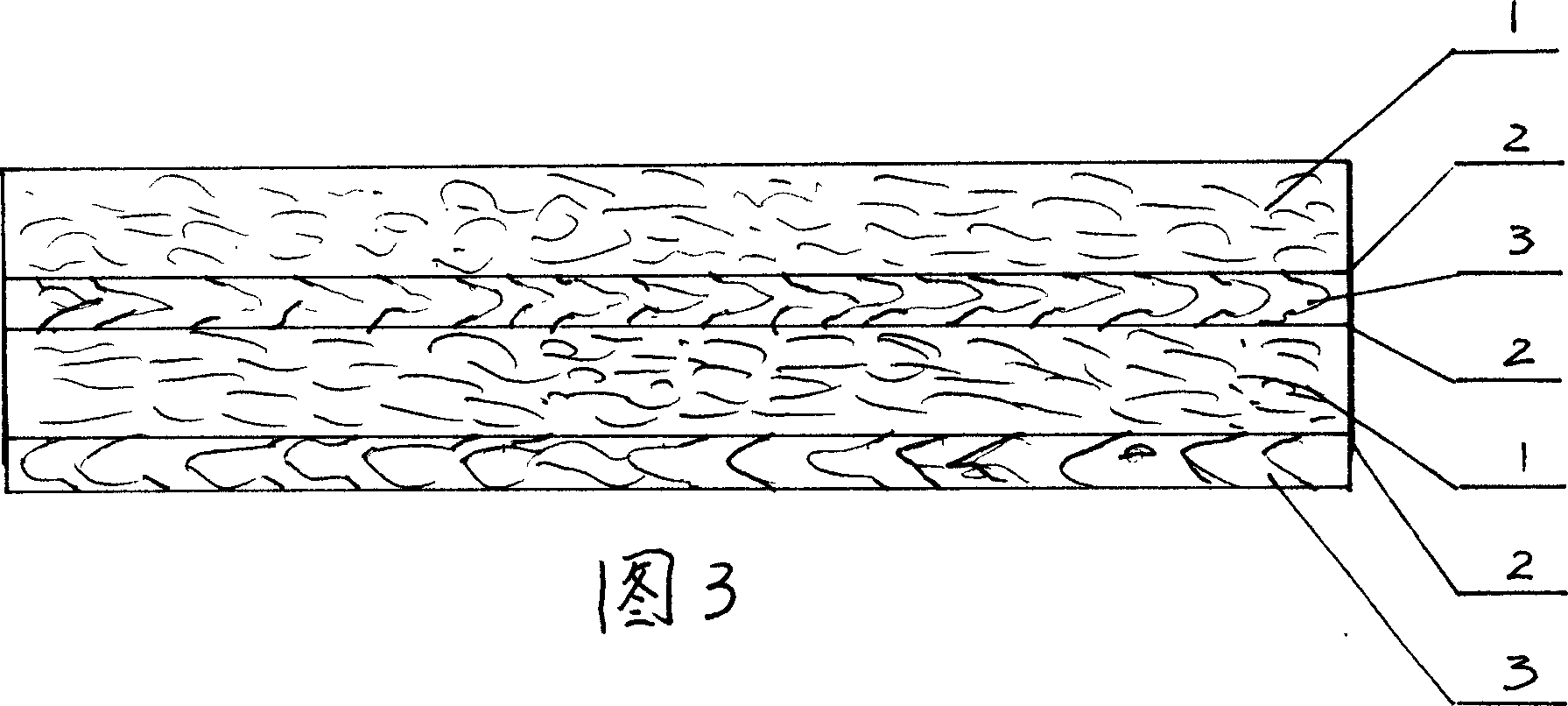Fibre veneer board and its production method
A production method and plywood technology, applied in the field of fiber plywood, can solve the problems of uneven thickness, low strength, and large strength fluctuation of plywood, and achieve the effects of smooth surface, accurate product size, and high material utilization rate
- Summary
- Abstract
- Description
- Claims
- Application Information
AI Technical Summary
Problems solved by technology
Method used
Image
Examples
Embodiment 1
[0047] Single-sided wood-grain decorative fiberboard: choose veneer with better texture, such as beech, willow, walnut, etc., glue on one side, and glue the glued side to the fiber layer, see figure 1 shown.
Embodiment 2
[0049] Double-sided wood grain decorative fiberboard: the veneer used for the bottom board and the front panel, the inner surface of which is glued and bonded with the middle fiber layer, as shown in Figure 2.
Embodiment 3
[0051] Two-layer veneer strong fiberboard:
[0052] The order of arrangement from bottom to surface is: veneer (longitudinal), inner surface glued → fiber layer → veneer (horizontal), double-sided glued → fiber layer. See Figure 3.
[0053] The veneer is arranged vertically or horizontally or vertically and horizontally, which can be determined according to the stress situation during use, and most of them should be vertically and horizontally arranged.
[0054] Between the veneer and the veneer, a layer of fiber layer should be laid. Because after the wood is peeled and dried, it is inevitable that there will be cracks. Defects such as holes and wood grain grooves, if the veneers are bonded to each other, will form voids, reduce strength, and are not beautiful. If there is a fiber layer between the veneers, the fiber can fill these gaps, the reinforcing effect is remarkable, and the strength is high and stable.
PUM
 Login to View More
Login to View More Abstract
Description
Claims
Application Information
 Login to View More
Login to View More - R&D
- Intellectual Property
- Life Sciences
- Materials
- Tech Scout
- Unparalleled Data Quality
- Higher Quality Content
- 60% Fewer Hallucinations
Browse by: Latest US Patents, China's latest patents, Technical Efficacy Thesaurus, Application Domain, Technology Topic, Popular Technical Reports.
© 2025 PatSnap. All rights reserved.Legal|Privacy policy|Modern Slavery Act Transparency Statement|Sitemap|About US| Contact US: help@patsnap.com



